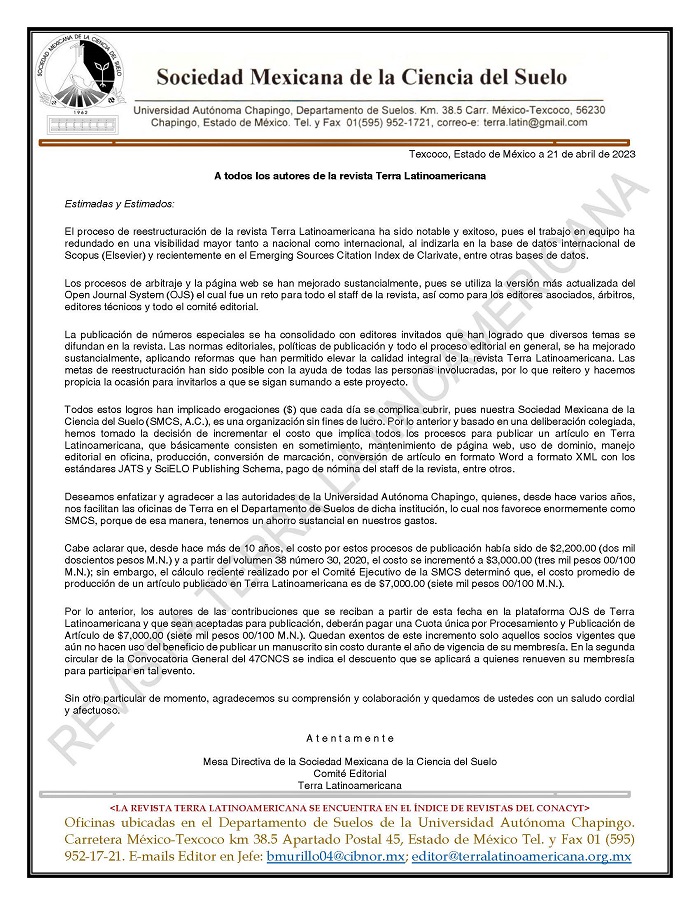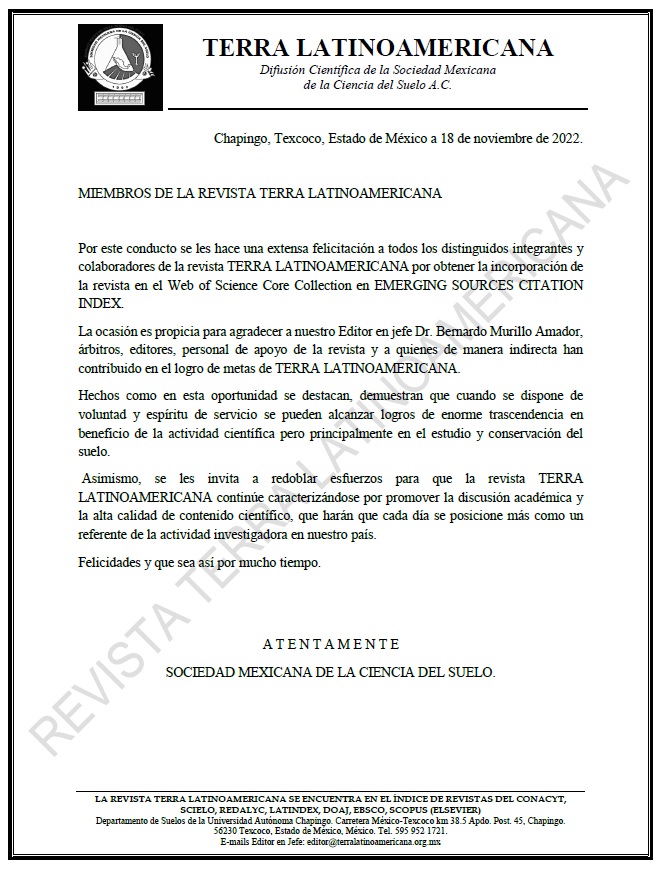Yield of ayocote bean and maize in an associated agrosystem in function of the number of plants per hill.
DOI:
https://doi.org/10.28940/terra.v35i3.214Keywords:
population density, topological arrangement, biomass, net incomeAbstract
The ayocote bean (Phaseolus coccineus L.) is a legume native to Mexico with potential as a foodstuff. To achieve greater spatial distribution to capture solar radiation and produce dry matter (MS), the climbing ayocote needs trellises. Conventional trellises raise the cost of production, but ayocote can be grown using maize as a trellis. To increase grain yield, management of population density and topological arrangement have been used. This study was conducted in Montecillo, Mexico, in the spring-summer season of 2014 to determine how the number of ayocote bean plants and maize per hill affects biomass production, harvest index, and grain yield and its components. The nine treatments were the result of the combination of 1, 2 and 3 ayocote bean plants and 1, 2 and 3 maize plants per hill. We recorded days to each phenological stage, total biomass (TB), harvest index (HI), grain yield (GY) and yield components of both crops. The experimental design was randomized complete blocks with four repetitions. The duration of the phenological phases of ayocote bean and maize were similar among treatments. In the association maize-ayocote the changes in the number of plants per hill of both crops affected TB, HI, GY and yield components of both ayocote bean and maize. In the agrosystem ayocote-maize, TB, GY and yield components are affected by the number of plants of bean ayocote and maize per hill. The combination that achieved the highest TB, GY and net income was three ayocote plants and one maize plant.Downloads
Publication Facts
Reviewer profiles N/A
Author statements
- Academic society
- Terra Latinoamericana
- Publisher
- Mexican Society of Soil Science, C.A.

















